By Lily Lin
As we approached the island of Amantani, I could see my new family waiting for me at the docks. For the next two days, I would be living with a host family, and getting to know a new 14-year old sister and two brothers, ages 11 and 8. As a continuation of my previous article on the man-made Uros floating island experience in Lake Titicaca, this column will focus on my homestay experience on a naturally-formed circular island called Amantani. Standing at approximately 12,500 feet, and amassing 3.5 square miles, the island is home to 800 families; it is believed that the inhabitants initially arrived from Bolivia during 500 B.C.
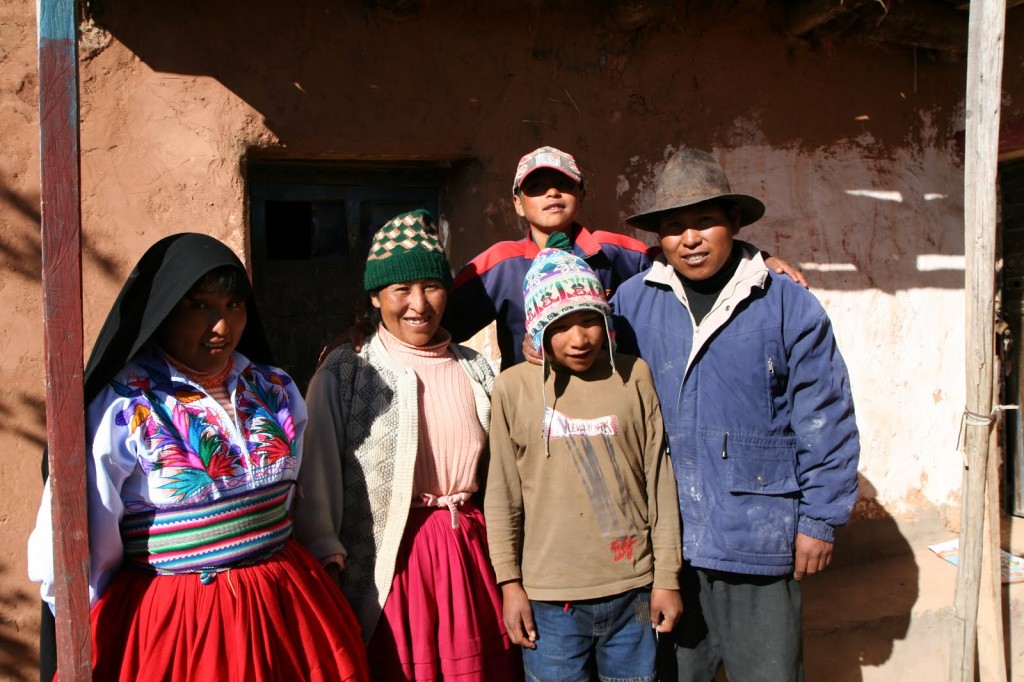
Today, the indigenous Quecha-speaking natives have resisted commercialization by refusing to establish resorts or restaurants of any kind on their island. Instead, overnight visitors are hosted by local families. For $30, a tourist is offered a guest room, three meals a day, and an opportunity to peek into the daily routine of an entirely different way of life.
Greeting my host family for the first time, the eight-year old boy appeared to be the most inquisitive of the three siblings. To my surprise, he wore a baseball cap while his older brother sported a knit woolen hat to keep warm. I noticed that the sister shielded herself from the elements by draping a large, black scarf over her head that extended well beyond her shoulders to her mid-back. While most of the island men wear black pants, white shirts, and a simple black vest, females wear flower-embroidered tops with thick, multi-layer skirts. Depending on which village they live in, the females’ skirts are either red, green, or black. My new sister’s skirt was red.
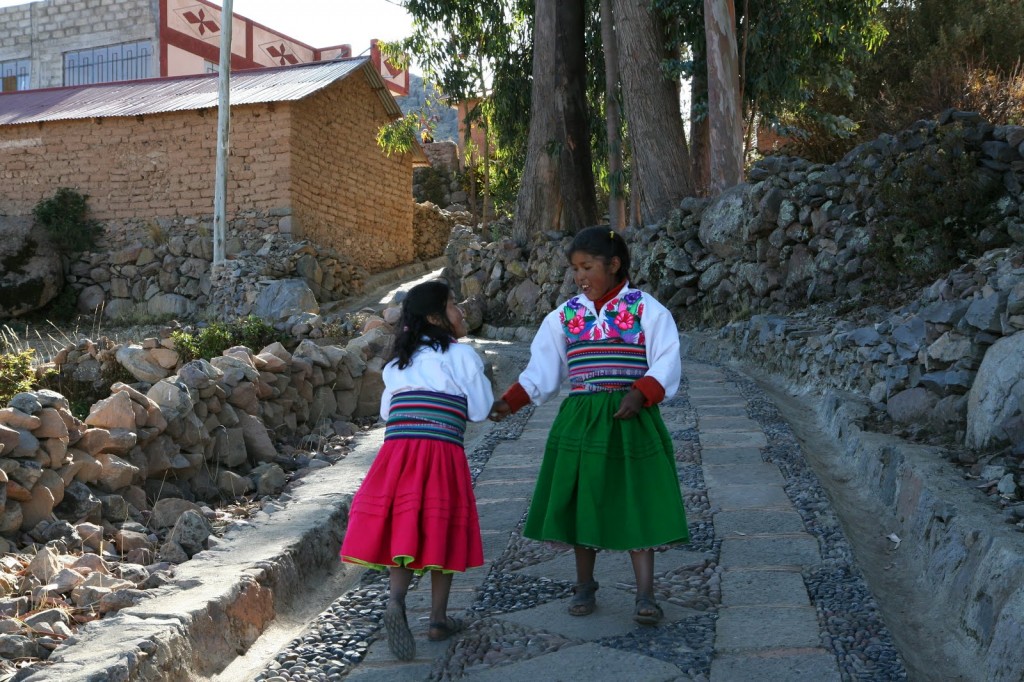
My host family insisted on carrying my luggage as we made our way to their home. I was extremely thankful for their assistance. As I ambled uphill along the stone walkway, the path seemed to stretch endlessly towards the sky. Even when I disembarked from the boat, I could feel my lungs pumping to suck in much-needed oxygen at this altitude. My new siblings seemed equally curious about me as I was of them; they giggled as their father carried my backpack up the stairs. They skipped as they laughed, occasionally stealing sly glances at me as I slowly made my way. I noticed the youngest concentrating every time he looked my way, all the while muttering “Chino Chino” as I walked closer to him. It was only later that I learned that he was saying “Chinese Chinese,” and realized that he had probably never seen anyone with my features on his island! I guess my visit was also a learning experience for him as well.
The town had skillfully utilized the stone that naturally covers the land, and resourcefully used it to make their homes, fences to constrain livestock, and archways that signaled entry to two of their most sacred mountains atop the island, Pachamama (Mother Earth) and Pachatata (Father Earth).
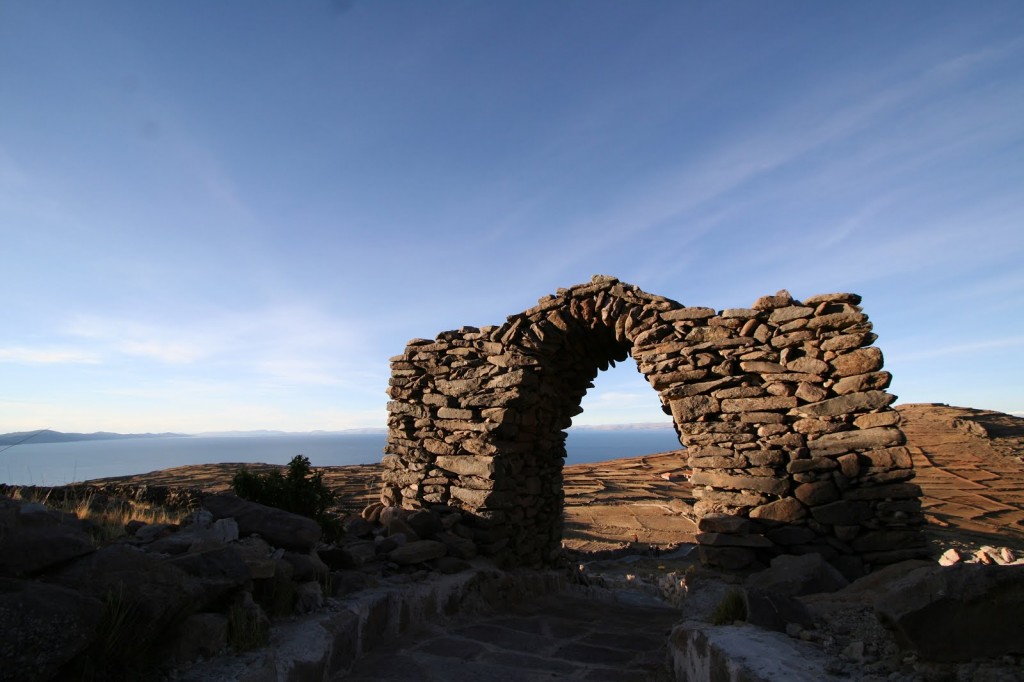
Eventually, my new family’s pace overtook mine and I was left with my All Ways Travel guide/translator. As we continued to make our way toward my family’s home, we heard music playing in the distance. I requested a minor detour, and discovered a wedding party that was in progress. Apparently, it was day two of the celebration and some of the men and women were already inebriated and dancing with a tipsy gait!
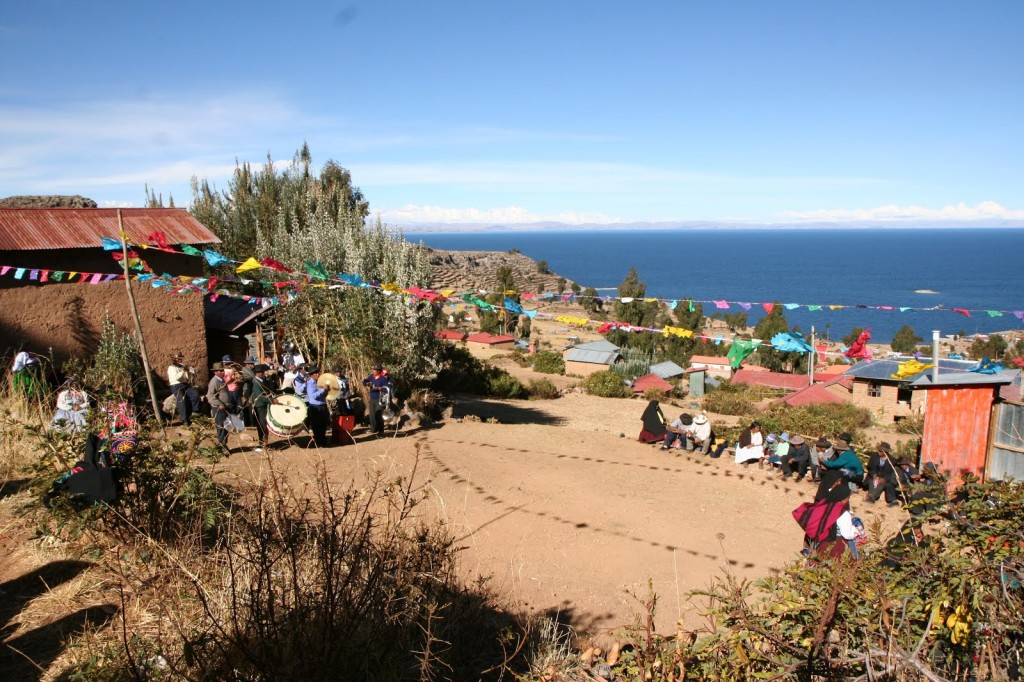
My guide explained that an entire village is invited to attend each wedding, and celebrations generally last a minimum of three days. It is also one of the few occasions when the locals can afford to indulge in meat. I was disappointed to learn that this village was not my host family’s village, and therefore we would not be attending the wedding. Darn it! I wanted an invite to the fun! My guide pointed out that all the females were wearing greens skirts, not the red representing my host family’s village. I continued to spy on the wedding from atop a stone wall. Except for the bride and groom, everyone was dressed in normal, day-to-day attire. Aside from their fancier outfits, the bride and groom had Peruvian currency, gifts of 10 and 20 Nuevo Sols, pinned to their chest.
The bride and groom must have sensed my desire to participate in the festivities. They soon noticed my peeping and beckoned with bright smiles. They sent their relatives running to invite me to join the festivities. Despite language and cultural barriers, I was offered a warm welcome, and introduced to the entire family. By the time I left the party, my cheeks and jaw were sore from all the smiling. I took portraits of the wedding party, with the intent of creating an album for the lovely couple upon my return home. To this day, I still imagine the surprise on their faces when they opened the gift from their unexpected guest.
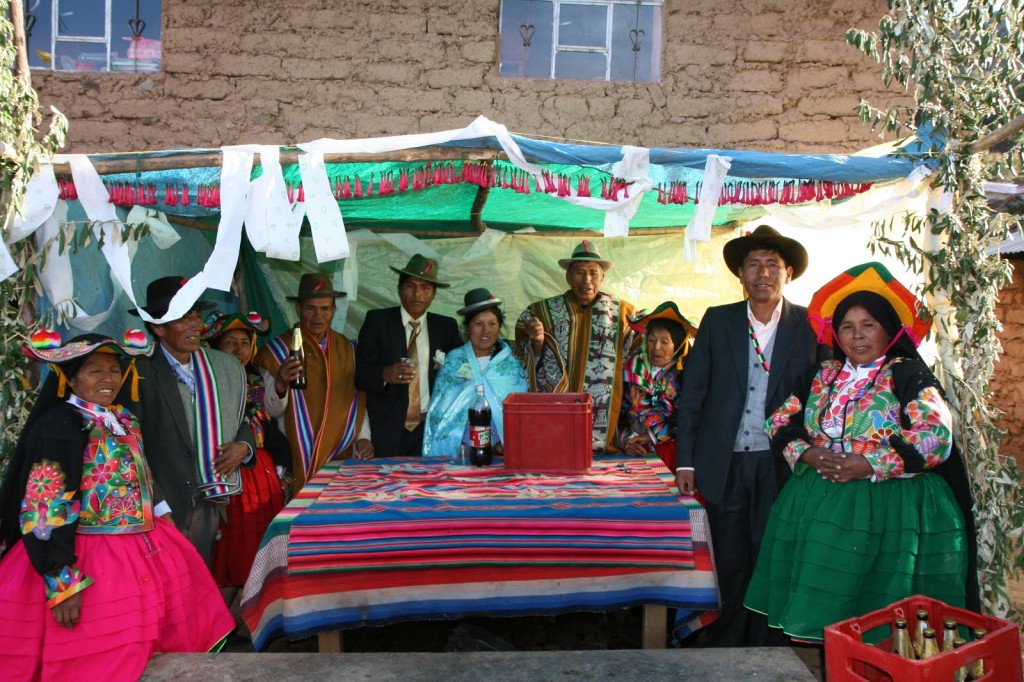
I reached my family’s home mid-afternoon and was shown to my quarters on the second floor of an adobe house in the middle of a large field. A rickety shack was located next door, and I was advised that it was the outhouse. I happened to see my host sister relieve herself out in the field, and made a mental note of that experience, as it appeared to offer a more scenic and less foul option for later that evening.
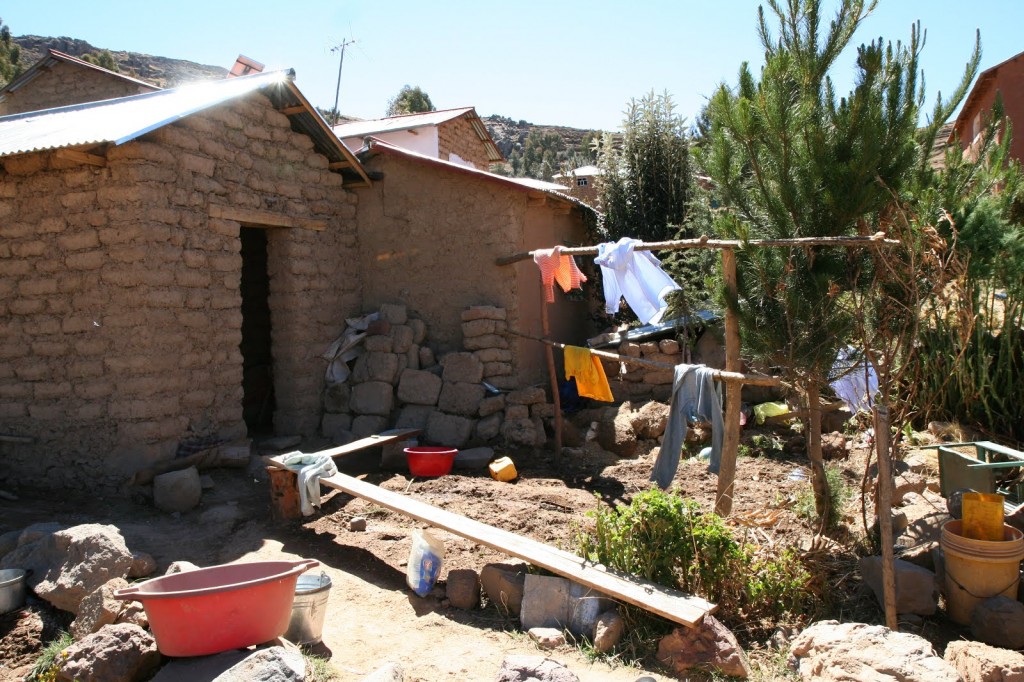
My bedroom was simple, and contained two twin-sized beds covered with threadbare sheets over a thin mattress. Thick woolen blankets were stacked at the end of the bed. A small desk was on one end, and hanging above it was a corkboard covered with photos of the family with several dozen tourists from over the years. It was evident that the family was used to sharing their hospitality with strangers.
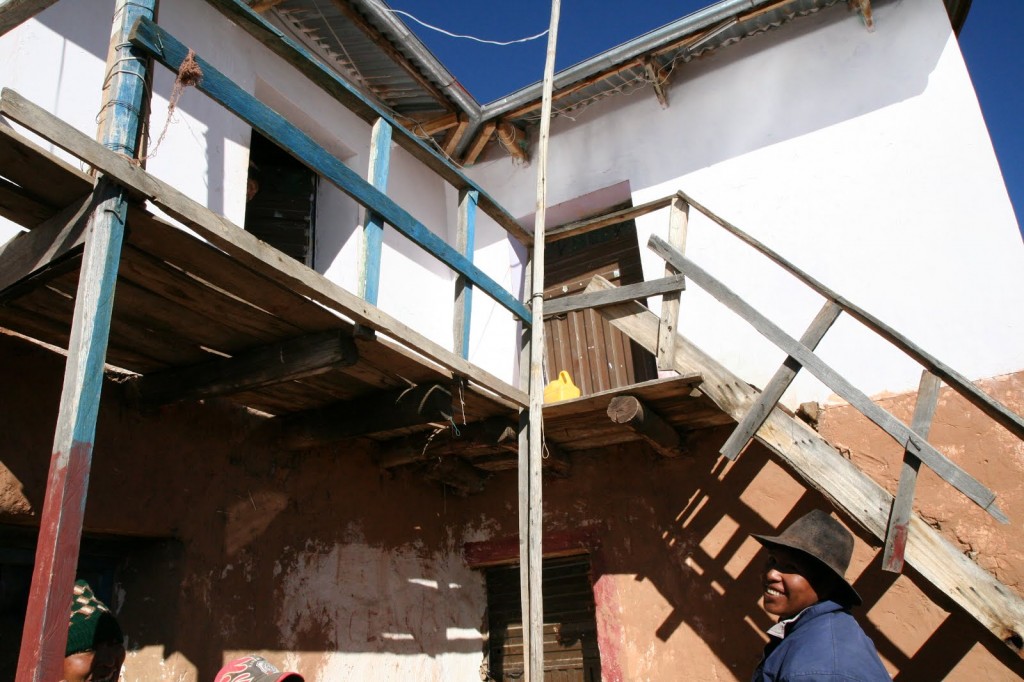
Within a few hours of our stay, it was clear that our host mother was responsible for every aspect of the family’s well-being. As the matriarch of the household, she was the nucleus of the family unit. It was difficult to determine her age—in contrast to our host father, she appeared worn and weathered. Without electricity or running water, mundane tasks required greater effort and were extremely time-consuming. Cooking was performed over a primitive “stove top”—basically, two holes cut on top of a bisque clay “box.” Firewood was fed into the side to generate the flames required for cooking. I gasped when I saw our host mother perched on a wooden log, hunched over the makeshift stove. The sight was a near-perfect replica of a traditional Incan cooking scene that I had observed in an Arequipa museum one week prior!
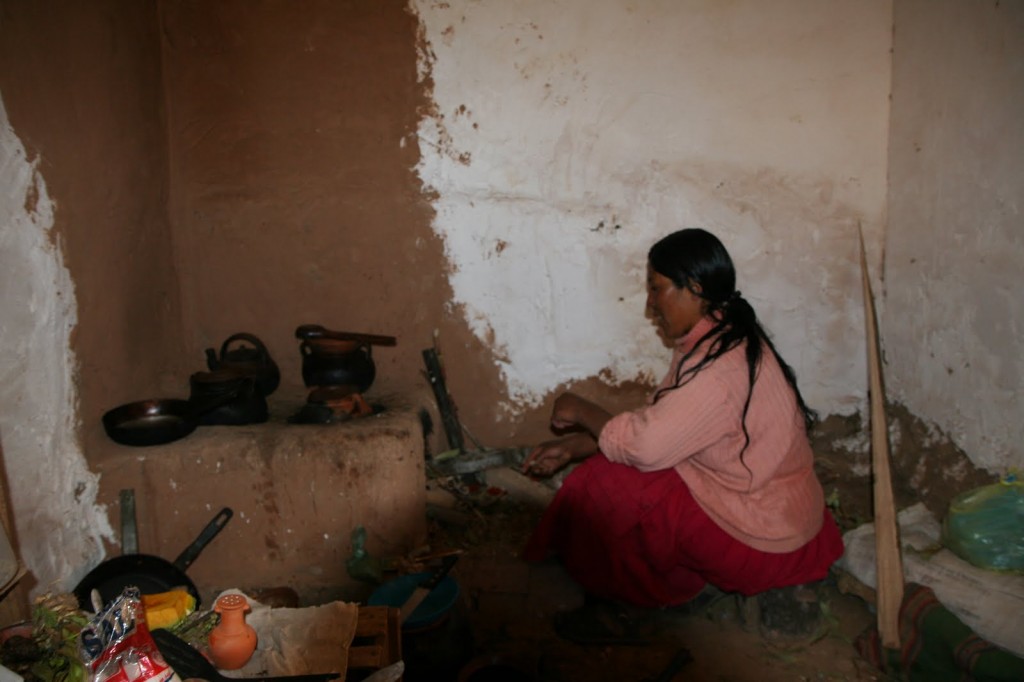
While waiting for dinner to be served, my guide recommended a leisurely tour of the island and a visit to the Incan ruins perched on top of Pachatata. The path was well-marked, and we passed grazing alpaca along rolling hills. My guide offered a handful of coca leaves to combat altitude sickness as I slowly made my way higher up the island. Several wizened island residents passed by quietly, offering encouraging smiles as they effortlessly climbed the stairs. At Pachatata, we sat in silence as we took in the incredible view of the surrounding lake and witnessed the evening show. The sunset acted as a paint brush, dying the lake with shades of orange and red, eventually blurring the lines between water and sky before releasing both into a shadowy darkness.

Once the sun passed over the horizon, the temperature drastically plummeted, and the chill quickly crept through my body. The hot quinoa soup my host mother had begun preparing earlier in the day was finally ready, and a welcome respite from the cold. In addition to the single bowl of soup, I was given four chunks of potato, and a slab of cheese on the side. It was during my homestay experience that I learned that the Amantani rely heavily on quinoa for sustenance and endurance. Pronounced as “keen-wah,” and known as the “Gold of the Incans,” quinoa has more protein than any other grain in the world.
Due to language barriers, it was difficult to communicate with my family. Despite a sheet of “useful” Quecha phrases that my guide had provided, I found hand motions and finger pointing were more effective in letting my host mother know that I appreciated her delicious meal. My Quecha-speaking efforts were often greeted with smiles and laughter, as my host family had no idea what I was trying to say. My host mother appeared surprised when I offered to wash the dishes (for which I was given about an inch of water from a stream half a mile away and a dirty rag). I noticed that my host mother waited for everyone in the family to finish eating before consuming the meager rations that were left over. Even though I was still quite hungry, I felt it inappropriate to ask for seconds.
Due to the poverty of the Amantani residents, our tour company recommended that we bring food staples and school supplies as gifts to our host family. It was only when I noticed the frugality with which our host mother infused our quinoa soap with celery, corn, onion, and carrots that I realized that fresh produce was a luxury on the island. Without electricity, refrigeration was not an option. With limited means, my host mother made the most of wilted celery that would have already gone into the trash at home. She even sparingly put aside two stalks that I assumed would go into the next meal.
Earlier that day, I spied our host mother and sister huddled excitedly over the tangerines I had purchased for them. Had I known that these mundane aspects of our lives were such a gift to them, I would have brought them more. These simple encounters were beginning to give me a greater appreciation for the marked contrast in our lifestyles. My visit with the Amantani made me realize how fortunate we are to live in the United States. The people of Amantani’s daily routines focus on the basic necessities of life—food, water, and shelter. Their days generally begin before sunrise and revolve around agriculture. The islanders are not afforded the luxuries of indoor plumbing, electricity, and potable water. Most of the locals do not have access to basic health care, and education is limited to primary school, with most children turning their energy to farming potatoes and weaving as soon as they are of age.
Based on my observations, the Amantani islanders’ lives were filled with happiness, hospitality, and family—not that different from our own. On the one hand, spending time on the island reminded me that the simple things in life are those that bring us the greatest joy— a modest dinner, a surprise on a wedding day, or witnessing a beautiful sunset from the top of a mountain. On the other hand, I was also reminded to cherish and appreciate our opportunities and luxuries in life. These are lessons that we should strive to remember and impart upon the next generation.
 Asian Fortune Your source for all things Asian American
Asian Fortune Your source for all things Asian American



